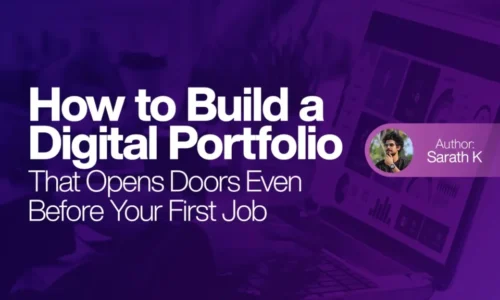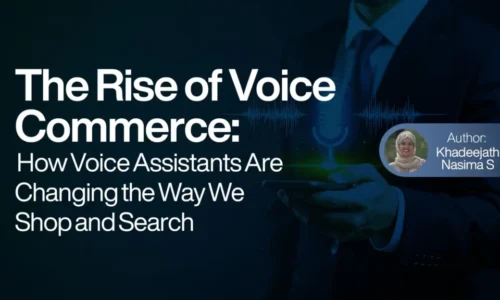Digital Marketing Vs Traditional Marketing
The world of marketing has experienced a transformation, moving from conventional techniques like print advertisements and billboards to the internet sphere. Since the advent of the internet and online platforms, companies may now use effective digital marketing techniques.
This blog discusses the transition from conventional to digital marketing strategies, stressing the significant distinctions and ramifications in the fast-paced corporate environment of today.
What is Traditional Marketing?
Traditional marketing refers to the customary techniques and media that companies have used to advertise their goods and services for many years. It includes a range of offline strategies including participation in trade exhibitions and events, telemarketing, radio and television commercials, brochures, flyers, billboards, print ads in magazines and newspapers, and direct mail campaigns.
Traditional marketing frequently focuses on one-way communication, in which companies send their information out to a large audience with little interaction or targeted personalization. It was the preeminent marketing strategy prior to the development of digital technology.
Examples for Traditional Marketing
Print advertising in newspapers and magazines, television commercials, radio advertising, direct mail campaigns, and outdoor advertising like billboards are some common examples of traditional marketing methods.
Billboards
Billboards and outdoor advertising utilize large displays in public areas to capture attention and create brand visibility. They feature compelling visuals and concise messages, reaching a wide audience and leaving a lasting impression during daily commutes or travels.
Print Advertising
This includes advertisements in newspapers, magazines, brochures, flyers, and other printed materials. Businesses use visually appealing designs and compelling content to capture the attention of potential customers.
Television Commercials
Television commercials are aired during television programs, leveraging the power of audiovisual storytelling to promote products or services. They often aim to create emotional connections with viewers and leave a lasting impression.
Radio Advertising
Radio commercials are broadcasted on radio stations, relying solely on audio to convey marketing messages. They often employ jingles, catchy slogans, or persuasive narratives to engage listeners and build brand recognition.
Direct Mail Campaigns
Direct mail involves sending promotional materials, such as postcards, catalogs, or personalized letters, directly to the mailboxes of targeted individuals or households. This method allows for a more targeted approach and enables businesses to reach potential customers in a tangible and physical way.
What is Digital Marketing?
Digital marketing utilizes online platforms and digital channels to promote products or services. It includes SEO, social media marketing, content marketing, email marketing, and more to reach and engage with target audiences.
Examples for Digital Marketing
Search engine optimization (SEO), social media marketing, content marketing, email marketing, pay-per-click (PPC) advertising, and influencer marketing are some common examples of digital marketing strategies used to promote products and engage with audiences online.
Search engine optimization (SEO)
Social media marketing
Content marketing
Email marketing
Pay-per-click (PPC) advertising
Influencer marketing
Affiliate marketing
Growth Marketing
Comparison of Digital marketing and Traditional Marketing
Through online platforms and channels, digital marketing offers a wide audience, accurate targeting, interactive interaction, real-time statistics, and adaptability.
Limited targeting and one-way communication are characteristics of traditional marketing, which uses offline techniques like print advertisements and television commercials.
Traditional marketing may be expensive, imprecise, and rigid. To develop a successful marketing strategy, both methods should be taken into account depending on the target market, marketing objectives, financial constraints, and industry.
Aspect
Digital Marketing
Traditional Marketing
Reach
Global reach with internet access
Limited to local or specific audience
Targeting
Precise targeting options available
Broad targeting options
Cost
Cost-effective
Expensive
Interactivity
Interactive and engaging
Passive
Flexibility
Easy to make changes and adjustments
Changes require more effort
Communication
Two-way communication possible
One-way communication
Campaign duration
Can be run continuously
Time-bound campaigns
Is it the end of traditional marketing
Traditional Marketing has undergone significant changes in recent years, and traditional marketing techniques are becoming less effective in today’s digital age.
The rise of social media and the widespread use of smartphones and the internet have revolutionized the way consumers interact with brands.
This shift has forced companies to re-evaluate their marketing strategies and adopt new approaches to reach their target audience.
Why is traditional marketing declining?
Traditional marketing techniques such as print ads, billboards, and TV commercials are becoming less effective as consumers are bombarded with an increasing amount of information and advertising.
Consumers are becoming more savvy and are able to filter out the noise and focus on what is relevant to them. They are also seeking more personalized and engaging experiences, which traditional marketing techniques are unable to provide.
Limited Targeting
Targeting possibilities can often be few when using traditional marketing strategies like print or TV ads. Without the capacity to target certain people based on their interests, demographics, or behaviours, they are able to reach a large audience.It is less successful at reaching the intended audience because of this lack of clarity.
Expensive Costs
For small firms with tight finances, traditional marketing channels like TV, radio, and print media may be expensive. When compared to the cost-effectiveness of digital marketing alternatives, the costs involved with producing and disseminating physical goods or showing ads might be exorbitant.
Lack of Measurable Results
Traditional marketing strategies frequently lack precise statistics and measurement. Making data-driven decisions for upcoming marketing initiatives can be tricky since it can be difficult to precisely track and analyse the performance of traditional campaigns.
Limited Interactivity
Traditional marketing often involves firms broadcasting their messages to the audience in a one-way fashion. A more immersive and interactive relationship with the audience is made possible by digital marketing’s interactive and engaging elements, such as social media interactions, live conversations, and personalised experiences.
Rapid Technological Advancements
The marketing environment has changed as a result of the rapid improvements in technology. Digital marketing makes use of cutting-edge technology like automation, data analytics, and artificial intelligence to create individualised, timely, and targeted marketing efforts.
Traditional marketing is further hampered by its inability to keep up with these technical developments.
.
Is traditional marketing still effective nowadays?
The answer, in simple terms, is yes. No matter the fantastic results promised by social media, viral marketing, or stealth advertising, there is still a vital role traditional media and marketing can play in many business strategies.
Traditional media can often be used in tandem with more modern, streamlined digital marketing campaigns.
Why is digital marketing on the rise?
Digital marketing has emerged as the new standard in marketing. It allows companies to reach their target audience in a more personalized and cost-effective way.
What are digital marketing channels?
Digital marketing channels are social media, search engine optimization (SEO), Search Engine Marketing and email marketing, allowing businesses to reach consumers where they are spending their time – online.
Organic Channels
Paid Channels
In addition, digital marketing enables businesses to track and measure their marketing efforts, which provides valuable insights into the effectiveness of their campaigns.
What is the growth rate of digital marketing over Traditional Marketing?
The growth rate of digital marketing compared to traditional marketing has been consistently higher in recent years.
While it’s challenging to provide specific growth percentages without up-to-date data, industry reports and studies highlight the substantial growth of digital marketing.
When compared to August 2021, Statista reports that as of February 2022, spending on digital marketing had climbed by 16.2% while spending on conventional marketing had increased by 2.9%.
Similar to this, advertising expenditures for digital and conventional media climbed by 15.8% and 1.4%, respectively, from February 2021 to August 2021.
What are the benefits of digital marketing?
Digital marketing offers businesses numerous benefits, including global reach, targeted advertising, cost-effectiveness, measurable results, flexibility, interactivity, personalization, and integration with technology.
With the ability to reach a wider audience, precisely target ideal customers, and track campaign performance in real-time, digital marketing provides businesses with the tools to optimize their marketing strategies, engage with their audience, and drive meaningful results in a cost-efficient and measurable way.
Will digital marketing survive in the future?
Yes, digital marketing is expected to not only survive but thrive in the future. With the increasing reliance on digital platforms, evolving consumer behavior, data-driven decision making, technological advancements, and the need for multi-channel integration, digital marketing will remain a crucial and effective strategy for businesses to reach and engage their target audience in an ever-connected world..
What is the Future of Marketing?
The end of traditional marketing does not signal the end of marketing altogether. Marketing will continue to evolve and adapt to the changing landscape.
Companies that are able to embrace change and adapt their marketing strategies will be the ones that succeed in the future. The key to success in marketing will be the ability to understand and connect with consumers on a personal level and provide them with relevant and engaging experiences.
Emerging trends and technologies in marketing, such as artificial intelligence (AI), voice search, influencer marketing, augmented reality (AR) and virtual reality (VR), personalization, and data privacy, are reshaping the marketing landscape.
These advancements provide opportunities for businesses to deliver personalized experiences, leverage innovative channels, and gain valuable insights from data analytics.
By embracing these trends, marketers can stay ahead of the curve, enhance customer engagement, and drive meaningful results in an increasingly digital and connected world.
Conclusion
In conclusion, the comparison between digital marketing and traditional marketing underscores the transformative power of digital strategies in today’s marketing landscape. Embracing digital marketing techniques is crucial for companies to effectively reach their target audience and stay competitive.
The future of marketing lies in personalized and engaging experiences that establish meaningful connections with consumers. However, it’s important to recognize that traditional marketing still holds value and can complement digital efforts.
By integrating both digital and traditional marketing channels, businesses can maximize their chances of success and create a comprehensive marketing plan that leverages the strengths of each approach.



